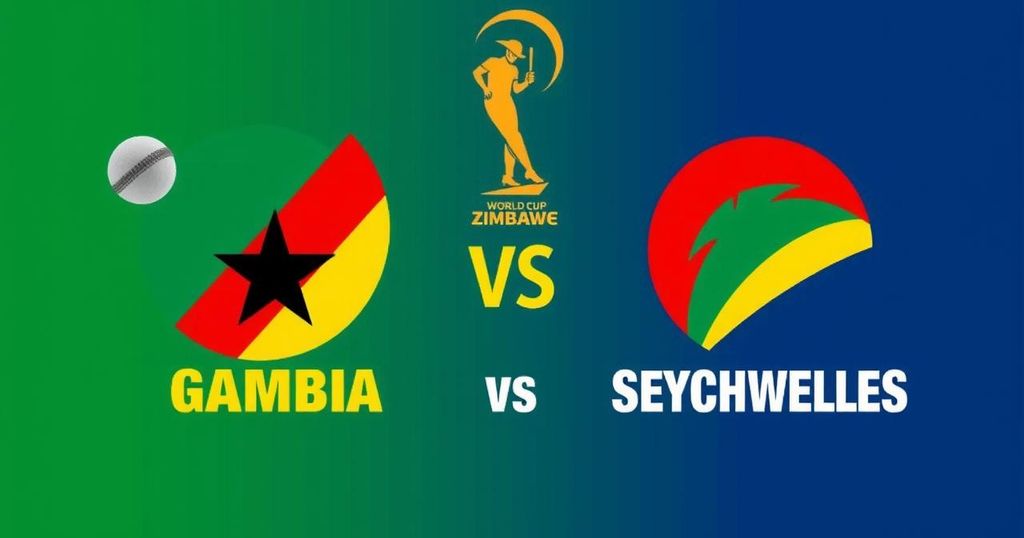Zimbabwe is competing against Gambia and Seychelles for qualification to the 2026 T20 World Cup after failing to secure a direct entry. The qualification process is part of a broader format where multiple teams vie for a limited number of spots in the tournament to be hosted in India and Sri Lanka, leading to increased competition due to the successful rise of countries like the USA.
Zimbabwe, a member of the International Cricket Council (ICC), is competing against the Gambia and Seychelles to achieve qualification for the 2026 T20 World Cup. This qualification process is necessary as Zimbabwe did not secure a direct entry into the tournament, unlike 12 other teams that have already qualified. In this edition of the T20 World Cup, which is scheduled to take place in India and Sri Lanka, a total of 20 teams will compete for the title, with eight spots available through sub-regional qualifiers across various regions, including Africa, Europe, Asia, the Americas, and the East-Asia Pacific. Among the teams that gained automatic qualification are India and Sri Lanka, benefiting from their status as hosts. Furthermore, the initial eight spots were filled by Super Eight qualifiers from the 2024 edition of the tournament, alongside additional spots based on team rankings. Consequently, India, Australia, England, West Indies, Afghanistan, South Africa, Bangladesh, and the USA have qualified directly for the upcoming tournament, while Pakistan, New Zealand, and Ireland also advanced based on their standings in the rankings. Zimbabwe’s qualification plight is exacerbated by the rise of the USA, ranked 17th. The USA made headlines with a remarkable performance in their inaugural World Cup, including a historic victory over Pakistan, thus securing a place in the Super Eights and a direct entry into the 2026 tournament. This shift adversely impacted Zimbabwe, as the spot that the USA occupied would have otherwise been filled by Zimbabwe, ranked 12th at the time of qualification. Consequently, Zimbabwe must now embark on the challenging path of qualifying through the Sub-Regional Africa Qualifier B, held in Kenya, where they will compete against Gambia, Kenya, Mozambique, Rwanda, and Seychelles for a chance at the next T20 World Cup.
The context of this qualification process stems from the system established by the ICC for the T20 World Cup tournaments. Each edition allows for multiple entry methods based on regional performance and rankings. For the 2026 T20 World Cup, after automatic qualifications were awarded to certain teams, a sub-regional competition has been introduced to fill the remaining slots. This structure means that teams like Zimbabwe, despite their full membership status and competitive history, must navigate a rigorous qualification process precipitated by the successful rise of other nations, such as the USA, which has complicated their prospects significantly.
In summary, Zimbabwe’s path to the 2026 T20 World Cup is fraught with challenges due to its recent failure to secure direct qualification. The emergence of new competitors in the global cricket arena, particularly the USA’s improved standing, has further complicated matters for Zimbabwe. Their upcoming matches against lower-ranked opponents like Gambia and Seychelles in the Sub-Regional Africa Qualifier B will be critical in determining whether they can reclaim their position in future T20 World Cup competitions.
Original Source: www.wisden.com






